Apollo Guidance Computer
description: an early digital computer produced for the Apollo missions; it played a crucial role in landing astronauts on the Moon.
18 results

Digital Apollo: Human and Machine in Spaceflight
by
David A. Mindell
Published 3 Apr 2008
IEEE Annals of the History of Computing (April–June 2000): 28. Hall, Eldon C. Journey to the Moon: The History of the Apollo Guidance Computer. Reston, Va: American Institute of Aeronautics and Astronautics, 1996. Hall, Eldon C. ‘‘MIT’s Role in Project Apollo, Vol. III: Computer Subsystem.’’ R-700. Cambridge, Mass.: MIT Instrumentation Laboratory, August 1972. Hall, Eldon C. ‘‘Reliability History of the Apollo Guidance Computer.’’ CR-140340. Cambridge, Mass.: Charles Stark Draper Laboratory, 1972. Bibliography 321 Hall, Eldon C. ‘‘Case History of the Apollo Guidance Computer.’’ E-1970. Cambridge, Mass.: MIT Instrumentation Laboratory, 1966. Hall, Eldon C.
…
Partridge, Hanley, and Hall, ‘‘Progress Report on Attainable Reliability of Integrated Circuits for Systems Applications,’’ 7. 21. Hall, ‘‘General Design Characteristics of the Apollo Guidance Computer.’’ 22. Sato, ‘‘Local Engineering in the Early American and Japanese Space Programs,’’ 87–88. Notes to Pages 132–138 287 23. C. S. Draper, E. C. Hall, G. W. Mayo, J. E. Miller, and E. G. Schwarm, ‘‘Engineering and Reliability Techniques for Apollo Guidance, Navigation, and Control at MIT Instrumentation Laboratory.’’ Unpublished manuscript, July 28, 1963. MIT Museum. Also see Hall, ‘‘General Design Characteristics of the Apollo Guidance Computer,’’ section III. 24. Holley et al. ‘‘Apollo Experience Report,’’ 33. 25.
…
It is not a reminiscence of NASA’s glory days of Apollo, and it does not seek to explain what went wrong at NASA in the three decades since.24 It does not repeat the numerous clichés of ‘‘we went to the moon with a computer that was less capable than a pocket calculator.’’ That may be true if you measure a computer’s capability in memory capacity or machine cycles alone. But if you consider interconnections, reliability, ruggedness, and documentation, the Apollo guidance computer is at least as impressive as the PC on your desktop, and the Apollo software an equally intricate ballet of many people’s work and ideas. Members of a video-game generation may find that Apollo makes sense when explained through stories of joysticks, cockpit displays, and hand-eye coordination.
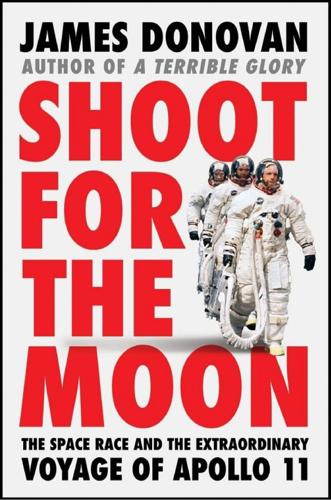
Shoot for the Moon: The Space Race and the Extraordinary Voyage of Apollo 11
by
James Donovan
Published 12 Mar 2019
As soon as he finished his last class, he drove to his parents’ house in Chicago, then got back in his car and headed south—he didn’t know exactly where Houston was, only that it was somewhere below Dallas, but he figured he’d be able to find it. Upon arriving there, he was given a choice: he could work with the big Mission Control Center ground computers or the onboard software, the Apollo Guidance Computer (AGC). He chose the one that would fly, the AGC, and though he felt intimidated at first, he found that almost no one there knew much about computers. After a month’s worth of intensive computer classes in Houston, he returned to find that he knew more about the machines than anyone at Mission Control, and since he was now an “expert,” they made him a group leader.
…
Over the next several months, Bales spent hundreds of hours in flight techniques and mission rules meetings and many more hours in the room dubbed the “Guidance Officers Training School” running through every type of guidance failure conceivable, hundreds of them. There were also trips to the MIT Instrumentation Lab, where the Apollo Guidance Computer had been designed, to go through all the software what-ifs, and to the Griffith Observatory in Los Angeles with astronauts; because they would navigate by the stars, he had to know them also. In Houston, because so many flight teams were practicing a lunar landing, there were shifts throughout the day and evening.
…
If the burn was too long by just a few seconds, their reduced speed would send them crashing to the lunar surface. They had to fire up the service-module engine again for six minutes and three seconds—and they had to do it eight minutes after they disappeared behind the moon, where they’d be unable to communicate with Mission Control if a problem occurred. The burn would be handled by the onboard Apollo Guidance Computer. After checking their numbers several times, they would have to enter the directions and figures manually. One wrong digit could mean a catastrophic change to their trajectory. Both the LM and the command module carried an AGC, and it was up to the task. Designed by the MIT Instrumentation Lab and built by Raytheon, it was a wondrous machine.
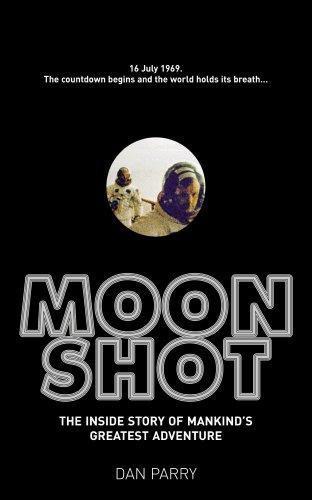
Moonshot: The Inside Story of Mankind's Greatest Adventure
by
Dan Parry
Published 22 Jun 2009
Once McCandless had finished, Collins got ready to give fresh navigation details to the computer, a task that required the suspension of PTC. From the point of view of the crew, the Moon was approaching the Sun's position in the sky and soon it would become impossible to see. Flying towards a moving target that was nearly 240,000 miles away and could not be seen would have been impossible without Apollo's guidance computer. A pilot flying an aircraft uses the Earth as a guide: the planet's magnetic field provides a reference point for the compass, landmarks come and go, and height can be gauged as a specific distance above the ground. In weightlessness, words like 'up' have no meaning, altitude is an empty concept, and a compass is useless.
…
.; and Andrew Chaikin, A Man on the Moon (Penguin,1994). 11 Chaikin, op. cit. 12 Hansen, op. cit. 13 Kranz, op. cit. 14 Hansen, op. cit. 15 Buzz Aldrin and Wayne Warga, Return to Earth; and Slayton, op. cit. 16 Kranz, op. cit. 17 Chris Kraft, Flight. 18 Collins, op. cit. 19 Kraft, op. cit. 20 Collins, op. cit. 21 Ibid. 22 Aldrin and Warga, op. cit.; also see Hansen, op. cit. 23 Hansen, op. cit. 24 Armstrong, Aldrin, Collins, with Gene Farmer and Dora Jane Hamblin, First on the Moon. 25 NASA's Lunar Surface Journal, at http://www.hq.nasa.gov/alsj/a11/a11.1201-fm.html; and http://en.wikipedia.org/wiki/Apollo_Guidance_Computer 26 Armstrong, Aldrin, Collins, op. cit.; and Collins, op. cit. 27 http://www.nasm.si.edu/exhibitions/attm/a11.jo.fc.1.html 28 Aldrin and Warga, op. cit. 29 Collins, op. cit. 30 Ibid. 31 Ibid. Chapter 7: Risks and Risky Remedies 1 Deke Slayton, Deke!. 2 David Shayler, Disasters and Accidents in Manned Spaceflight. 3 Slayton, op. cit. 4 Ibid. 5 Dr James Hansen, First Man. 6 Michael Collins, Carrying the Fire. 7 Ibid. 8 Ibid. 9 Frank Borman, roll 386, 06:30:10. 10 Collins, op. cit. 11 Ibid. 12 Ibid. 13 Frank Borman, roll 386, 06:30:10. 14 Susan Borman, roll 388, 08:02:47:21. 15 Collins, op. cit. 16 Bill Anders, roll 1376, 16:14:22:28. 17 Andrew Chaikin, A Man on the Moon. 18 Ibid.; and Bill Anders, roll 1376 16:39:02:27. 19 Hansen, op. cit. 20 Buzz Aldrin and Wayne Warga, Return to Earth; and Hansen, op. cit. 21 Hansen, op. cit.; and personal conversation between the author and Neil Armstrong, Barcelona, 12/4/08. 22 Hansen, op. cit. 23 Ibid. 24 Ibid. 25 Ibid. 26 Ibid. 27 Armstrong, Aldrin, Collins, with Gene Farmer and Dora Jane Hamblin, First on the Moon. 28 Aldrin and Warga, op. cit. 29 Slayton, op. cit.; and Hansen, op. cit. 30 Armstrong, Aldrin, Collins, op. cit. 31 Slayton, op. cit. 32 Ibid. 33 Chris Kraft, Flight. 34 Aldrin and Warga, op. cit. 35 Ibid. 36 Hansen, op. cit. 37 Collins, op. cit. 38 Ibid. 39 Hansen, op. cit. 40 Collins, op. cit. 41 Hansen, op. cit. 42 Ibid. 43 Aldrin and Warga, op. cit. 44 Buzz Aldrin interview, roll 382, 22:29:40:29. 45 Hansen, op. cit. 46 Slayton, op. cit.; Kraft, op. cit.; Hansen, op. cit.; and Andrew Smith, Moondust 47 Aldrin and Warga, op. cit. 48 Kraft, op. cit.; and Hansen, op. cit. 49 Buzz Aldrin, roll 383, 23:01:05:14. 50 Buzz Aldrin, roll 382, 22:13:01:17. 51 Aldrin and Warga, op. cit. 52 Ibid. 53 Slayton, op. cit. 54 Aldrin and Warga, op. cit. 55 Ibid. 56 Hansen, op. cit.; and Collins, op. cit.
…
Sparks, Moon Landing, Project Apollo, Dodd, Mead, 1970 Glen Swanson (ed.), Before This Decade Is Out, University Press of Florida, 2002 Loyd Swenson, James Grimwood and Charles Alexander, This New Ocean, NASA, 1998 Guenter Wendt, The Unbroken Chain, Apogee Books, 2001 Websites history.nasa.gov/monograph4 history.msfc.nasa.gov/saturn_apollo/first_saturn_rocket.html history.nasa.gov/SP-4205 www.thespacereview.com/article/735/1 www.chron.com/content/chronicle/special/jfk/houston/stories/dinner.html www.britannica.com/eb/article-9057747/Outer-Space-Treaty#145193.hook www.lbjlib.utexas.edu/johnson/archives.hom/speeches.hom/670127.asp www.hq.nasa.gov/alsj/a11/a11.1201-fm.html en.wikipedia.org/wiki/Apollo_Guidance_Computer www.nasm.si.edu/exhibitions/attm/a11.jo.fc.1.html www.thespacereview.com/article/188/3 www.thespacereview.com/article/735/1 www.pbs.org/wgbh/amex/moon/peopleevents/p_wives.html news.bbc.co.uk/1/hi/magazine/7085003.stm www.hq.nasa.gov/pao/History/SP-4204 www.parkes.atnf.csiro.au/news_events/apollo11 www.uss-hornet.org/history/apollo www.lpi.usra.edu/lunar/missions/apollo/apollo_11/samples news.bbc.co.uk/1/hi/world/americas/2272321.stm news.bbc.co.uk/1/hi/sci/tech/2410431.stm Use the following NASA link to find out when the International Space Station can be seen with the naked eye above your home town: spaceflight.nasa.gov/realdata/sightings/index.html INDEX Aaron, John Abernathy, Reverend Ralph Agena target vehicle Air and Space Museum see Smithsonian Institution Aldrin, Buzz (Edwin Eugene Aldrin Jr) Apollo 8 career post-Apollo 11 childhood Gemini flights landing on the moon launch, Apollo 11 launch preparation, Apollo 11 MIT moon, on appearance of moon walk, NASA, joins Neil Armstrong and position in Apollo program PR duties, Apollo 11 quarantine, Apollo 11 re-entry and landing, Apollo 11 rendezvous expert return to Eagle, Apollo 11 return to earth, Apollo 11 selected for Apollo 11 selection for moon walk on surface of moon, Apollo 11 training undocking, Apollo 11 command and lunar modules US Navy Aldrin, Gene Aldrin, Joan Algranti, Joe Anders, Bill Apollo, Project Apollo 1 tragedy, effect upon costs of Kennedy and see Kennedy, John F.
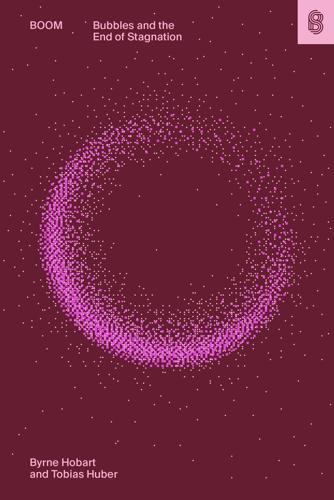
Boom: Bubbles and the End of Stagnation
by
Byrne Hobart
and
Tobias Huber
Published 29 Oct 2024
Moreover, Apollo set the pace for chip improvement, which kickstarted a recursive process: Because software was designed for higher-performance computers, chip manufacturers made better chips to meet that demand for computation, which encouraged the next generation of chip manufacturers to build still-faster chips, and so on. The Apollo guidance computer possessed a 1 MHz processor; a typical smartwatch today possesses more than 1,000 times that processing power. In other words, Apollo spawned Moore’s law, which launched the computer age. It’s entirely possible that absent this, transistors would have remained a small-scale curiosity, interesting for a few use cases but, due to the lack of large-scale manufacturing, far too expensive to replace vacuum tubes in most real-world applications.
…
Humble beginnings In June 1948, Bell Labs held a press event to announce the development of a new product, which it spelled out to its audience: “T-R-A-N-S-I-S-T-O-R.” The product, it allowed, can “do just about everything a vacuum tube can do, and some unique things which a vacuum tube cannot do.” 212 This descriptor is in the running for understatement of the century. The transistor would end up operating the Apollo guidance computer, calculating pi to 31 trillion digits, and defeating the best human player at chess (1997), Rubik’s Cube (2011), and Go (2016), to say nothing of its role in changing the nature of our work and social lives. Bell Labs could be forgiven for underestimating the impact of its new gadget.
…
In 1962, the agency signed a contract to use Fairchild’s MicroLogic circuits for its navigation computer, which it needed by the end of the decade. To allay concerns that the upstart company might go out of business before then, NASA provided contracts for ground test equipment, ensuring Fairchild would have a reliable customer. The Apollo guidance computer was the first major test case for the new computing paradigm. As a single-use product, there was no margin for error. In some respects, this made transistors a poor choice; they hadn’t been well tested and were manufactured by a tiny number of highly specialized companies. From an engineering perspective, however, they were ideal for use on a spacecraft because they had few moving parts, consumed much less power, and weighed significantly less than alternative components.
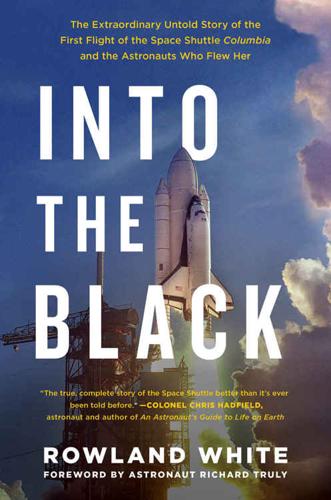
Into the Black: The Extraordinary Untold Story of the First Flight of the Space Shuttle Columbia and the Astronauts Who Flew Her
by
Rowland White
and
Richard Truly
Published 18 Apr 2016
In choosing what was essentially an off-the-shelf machine they were taking a wholly different approach to the path they’d followed for Gemini and Apollo. With weight and space so critical in those two smaller spacecraft, NASA had bespoke computers designed and built. Without room for duplicate backup systems, the safety of the spacecraft depended on the reliability of the single computer. With so much at stake, a tailor-made computer—the Apollo Guidance Computer—was created by MIT in which the possibility of failure was simply designed out. Each component of the new processor was tested at every point in its manufacture. In the words of one NASA engineer, “every piece of metal could be traced to the mine it came from.” It was an unprecedented undertaking, but it resulted in a computer which simply refused to fail: 1,400 hours of operation produced not a single in-flight failure.
…
See telescopes Apollo 1, 44, 45, 53, 105–6 Apollo 8, 46, 55 Apollo 10, 46, 48, 61, 63, 64, 94 Apollo 11, 3, 48, 62–65, 79, 100–101, 246 Apollo 13, 122, 129, 184, 202, 258 accident, 75–80, 279, 348 Accident Investigation Board, 88–89 Apollo 15, 68 Apollo 16, 80, 81, 135 John Young on, 5, 94–95, 129, 226, 272, 290, 356 on the moon, 94–95 T. K. Mattingly on, 129, 191 Apollo 17, 80, 81, 121, 153, 157, 260 Apollo 19, 80 Apollo program, 84, 92, 143, 369 abort procedures, 201–2 Apollo command module, 48, 99 Apollo Guidance Computer, 109 astronauts, 42, 164 capsule design and construction, 105–6, 121, 155 capsule reentry, 50 future of, 56, 66 heat shield design, 48, 132, 134, 144, 278 moon missions, 91, 135, 142 radio communication, 293 See also Skylab Apollo-Soyuz Test Project, 107, 138–40, 145, 148, 151, 183, 184 Aquarius.
…
E., 87 Cohen, Aaron Columbia’s damaged heat shield, 324 Columbia’s malfunctioning flight recorder, 332 heat shield testing, 247 orbiter development, 126, 147, 207, 209, 221–22 Shuttle Approach and Landing tests, 168 STS-1, 256, 324, 373–74 Cold War, 31, 34, 138, 142, 143, 380 Cole, Forrest, 243, 244, 292 Collins, Michael, 46, 48, 62, 63 Colorado Springs, 248 Columbia, 390 abort procedures, 231–32, 238–40 arrives at Kennedy Space Center, 222 auxiliary power units (APUs), 245, 337–39, 342, 345, 370, 382 cabin design, 285 computer systems, 228–29 construction, 191–92 engines, 230, 238, 244, 267, 272, 350 flight control system, 252 heat damage to undercarriage door, 356, 360, 372 heat shield construction concerns, 211–12, 218, 221–23, 245, 246–47, 250 heat shield suffers damage (STS-1), 5–6, 277–84, 286–329, 333–37, 342, 351–52, 356 launch preparations, 238, 240, 242–45, 248, 251–52 leaves Rockwell, 210–11 loss of, 391–93 malfunctioning flight recorder (STS-1), 297, 325–26, 329–31, 332 name, 210 reaction control system (RCS) (STS-1), 251–52, 304–5, 309–15, 317–22, 356, 358, 392 recovery convoy, 274, 359, 369–70 reentry simulations, 299 shock waves, 132, 266, 268–69, 348, 364 Shuttle to ground voice transmissions, 249 solid rocket boosters (SRBs), 265, 266, 268, 269–70 STS-1 in orbit, 4–6, 272–339, 341–51 STS-1 launch, 226, 228, 247, 257–72 STS-1 reentry and landing, 341, 342–48, 349–73 STS-2, 376–77, 384 STS-3, 377 STS-4, 377–78 STS-5, 383 STS-7, 379 STS-8, 379 STS-9, 381–83 STS-107, 393 temperature control, 275–76 Columbia (ship), 210 command modules, 246 Odyssey, 76, 77, 94 computer systems, 108–9, 154, 156, 186 Apollo Guidance Computer, 109 IBM 305 RAMAC, 108 IBM 4pi, 32, 108–9, 110, 129 IBM AP-101, 129, 130–31, 228 MOL program, 42 PASS (primary avionics software system) software, 228, 232, 260 software problems, 228–29 Space Shuttle, 129–31, 168, 169, 215, 244 STS-1 launch problems, 260–62 STS-9 problems, 108–9 Confederate Air Force, 123 Conrad, Pete, 112, 113, 114, 118–20, 121, 297 Consolidated Space Operations Center, 248, 378 Constellation, USS, 196 Convair B-58 Hustler, 172 F-106 Delta Dart, 20 Coral Sea, USS, 196 Cornell University, Aeronautical Laboratory, 136 CORONA.
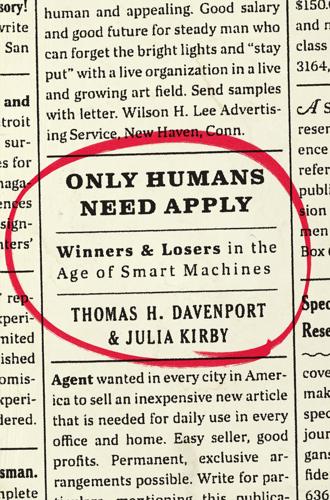
Only Humans Need Apply: Winners and Losers in the Age of Smart Machines
by
Thomas H. Davenport
and
Julia Kirby
Published 23 May 2016
A great example came with the Apollo flights to the moon in the late 1960s and early ’70s, which involved ongoing battles between the engineers who wanted computers to fly the rocket and capsule, and the astronauts who wanted to retain control. The astronauts were willing to concede that they needed the Apollo Guidance Computer to navigate. As astronaut David Scott later said: “If you have a basketball and a baseball 14 feet apart, where the baseball represents the moon and the basketball represents the Earth, and you take a piece of paper edgeways, the thinness of the piece of paper would be the corridor you would have to hit when you come back.”7 But they wanted to do the work of landing the vehicle on the lunar surface themselves.
…
Accenture, 83, 102, 134, 183 Adrià, Ferran, 122 Aetna, 83 AI (film), 125 Ainge, Danny, 117 Allen, Robbie, 97 Allstate, 94, 103–4 Amazon Echo, 167 Amazon Robotics (Kiva Systems), 2–3 Amplify, 20 “Analytics 3.0,” 42–43 Analytics Revolution, The (Franks), 43 AnalytixInsight, 22 Anders, George, 120 Anthem, 15, 84 Aplin, Ken, 153–54 Apollo Guidance Computer, 67 Apple, 63 Archilochus, 171 architect jobs, 23, 24–25, 151 Ariely, Dan, 113 Armstrong, Stuart, 226, 249 Arnett, Thomas, 84 artificial intelligence, 7, 26, 33–58, 141, 163, 189. See also cognitive technologies; computers “AI winter,” 36 Apollo flights and, 67 Asimov’s three laws for, 244 augmentation of soft skills and, 123 automating administrative tasks and, 216 broadening the base of methods, 194 cancer cure and, 60–61 consequences of, 243–46, 249–50 cost to build, 155 in education, 230 endowing with emotions, 246 expert systems, 37 fighter pilots and, 66 human attributes, 124–27, 245 human control of, 244–45 investing by, 92–93 move from “narrow” to “general,” 35 programmers, 178 regulatory oversight of, 246–49 researchers and, 181 Ruby programming language, 222 self-awareness and AI spring, 54–57 social memory, 123 society-level decisions about, 226–28 term use and branches of, 37–38 Thiel on, 243 universe model and KIGEN, 59 warnings and predictions about, 225–26 Warren, 20 (see also IBM Watson) artists, 24, 119, 238 Asimov, Isaac, 244 Associated Press (AP) automated journalism, 96–98, 103, 104, 121, 222 investing in automated publishing, 97 Atlas, David, 121 Auerbach, Red, 116–17 Auerswald, Phil, 128 augmentation, 31–32, 59–88, 201–24, 234 “automation leader” for, 221–23 automation vs., 61–63, 128–29, 204–8, 223–24 cutting both ways, 70–74 defined, 64–65 example, spreadsheets, 69–70 example, underwriting, 77–84, 218–19 five options for, 76–77, 218 forms of, 65–69, 209 as goal, 228–29 in governance, 249–51 government policies and, 229–43 human-machine partnership, 68, 203, 234, 235, 237, 239, 250, 251 implementing, steps for, 208–23 key capabilities of humans and, 71–73 less work not likely with, 69–70 “moon shots,” 210, 215–16 as organizational priority, 203–4 preparing employees for, 219 proofs of concept or pilots, 220–21 reasons for augmentation, 204–8 smart machines and job security, 59–61 Stepping Aside, 77, 81, 85, 87, 108–30 Stepping Forward, 77, 83–86, 88, 176–200 Stepping In, 77, 81–82, 85, 87, 131–52 Stepping Narrowly, 77, 82, 85, 87–88, 153–75 Stepping Up, 76–77, 80, 84–86, 89–107 three forms, for specialization, 166–69 as wheels for the mind, 63–65 Augmentation Research Center, 64 “Augmenting Human Intellect” (Engelbart), 64 Automated Insights, 22, 97 Wordsmith, 96 automation, 1, 3–4, 5, 6, 8, 12–13 augmentation vs., 61–63, 128–29, 204–8, 223–24 business process management, 40 codified tasks and, 12–13, 14, 27–28, 30 content transmission and, 19–20 eras of, 2–5 government policies and, 229–43 income inequality and, 228–29 “isolation syndrome,” 24 job losses and, 1–6, 8, 30, 78, 150–51, 167, 223–24, 226, 227, 238 jobs resistant to, 153–75 process automation, 48–49 “race against the machine,” 8, 29 reductions in cost and time, 48, 49 regulated sectors and legal constraints on, 213–15 repetitive task, 42, 47–48, 49, 50 robotic process, 48–49, 187, 221, 222–23 “rule engines,” 47 sectors using, 1, 11–12, 13, 18, 74, 201–3 (see also specific industries) signs of coming automation, 19–22 Stepping Forward with, 176–200 Stepping In with, 134–52 Stepping Up and, 91–95 strategy of, as self-defeating, 204–8 strongest evidence of job threat, 19 Automation Anywhere, 48, 216 automotive sector, 1 Autor, David, 70–71 Balaporia, Zahir, 189–91 Bankrate.com, 96 Bathgate, Alastair, 156, 157 Baylor College of Medicine, 212 Beaudry, Paul, 6, 24 Belmont, Chris, 209 Berg company, 60–61 Berlin, Isaiah, 171 Bernanke, Ben, 28, 42, 73 Bernaski, Michael, 79, 80, 81, 82, 187 Bessen, James, 133, 233 Betterment, 86–87, 198 big-picture perspective, 71, 75, 76–77, 84, 91, 92, 99, 100, 155 Stepping Up and, 98–100 Binsted, Kim, 125 “black box,” 95, 134, 139, 148, 192, 198 Blanke, Jennifer, 7 Blue Prism, 49, 156, 216, 221 Bohrer, Abram, 159 Bostrom, Nick, 226, 227 Brackett, Glenn, 128 Braverman, Harry, 15–16 Breaking Bad (TV show), 172 Brem, Rachel, 181–82 Bridgewater Associates, 92–93 Brooks, David, 241 Brooks, Rodney, 170, 182 Brown, John Seely, 237 Brynjolfsson, Erik, 6, 8, 27, 74 Bryson, Joanna J., 226 Buehner, Carl, 120 Buffett, Warren, 244 Bush, Vannevar, 64, 248 Bustarret, Claire, 154 BYOD (Bring Your Own Device), 13 Cameron, James, 165–66 Carey, Greg, 154, 156, 172–73 Carr, Nick, 162 CastingWords, 168 Catanzaro, Sandro, 179–80, 193 Cathcart, Ron, 89–91, 95 Cerf, Vint, 248 Chambers, Joshua, 250 Charles Schwab, 88 chess, 74–76 Chi, Michelene, 163 Chicago Mercantile Exchange, 11–12 Chilean miners, 201–2 China, 239 Chiriac, Marcel, 217 Circle (Internet start-up), 146 Cisco, 43 Civilian Conservation Corps (CCC), 238 “Claiming our Humanity in the Digital Age,” 248 Class Dojo, 141 Cleveland Clinic, 54 Clifton, Jim, 8 Clinton, Bill, 108 Clockwork Universe, The (Dolnick), 169–70 Codelco/Codelco Digital, 40, 201–3 Cognex, 47 CognitiveScale, 45, 194, 209 cognitive technologies, 4–5, 32, 33–58.
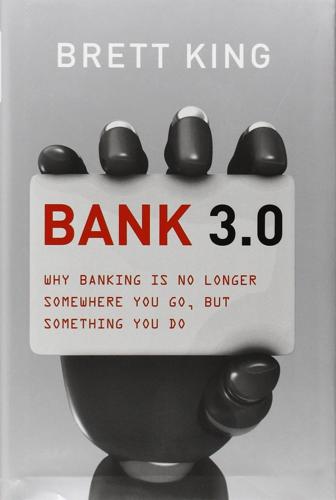
Bank 3.0: Why Banking Is No Longer Somewhere You Go but Something You Do
by
Brett King
Published 26 Dec 2012
Figure 9.1: Gordon Moore’s original graph predicting transistor growth (Credit: Intel Corp) In real terms this means that a mainframe computer of the 1970s that cost over $1 million had less computing power than your average smartphone has today. Have you ever watched the movie, Apollo 13? Remember they were trying to work out how to boot up the Apollo Guidance Computer without breaking their remaining power allowance? Well, that computer, which was at the height of computing technology in the ’70s, had around 32k of memory and ran at a clock speed of 1.024 MHz. When the IBM PC XT launched in 1981 it was already about eight times faster than the Apollo computer.
…
The current iPhone 4S is roughly two million times more powerful than the Apollo 11 Guidance Computer that landed men on the moon. In fact, the first iPhone model (the 2G as it is now known) had more computing power in one handheld device than NASA had in its entirety in 1970. Figure 9.2: Apollo Guidance Computer (circa 1970) Credit: Draper Labs Those little musical greeting cards with a chip inside them to play a tune have more computing power than all the Axis and Allied forces had combined in World War II. In 1961 Monash University in Melbourne, Australia, purchased its first computer for the computer science department, the Ferranti Sirius.3 This computer had 1k of memory, 3k of additional storage in cabinets, and was programmed via tape.

The One Device: The Secret History of the iPhone
by
Brian Merchant
Published 19 Jun 2017
It would go on to start a boom that would feed the transistor industry, and it became the bestselling device in history up to that point. Transistor count: 4. So far, so good—and these aren’t even on microchips yet. Let’s fast-forward, though. The Apollo spacecraft, which landed humans on the moon in 1969, had an onboard computer, the famed Apollo Guidance Computer. Its transistors were a tangle of magnetic rope switches that had to be stitched together by hand. Total transistor count: 12,300. In 1971, a scrappy upstart of a company named Intel released its first microchip, the 4004. Its transistors were spread over twelve square millimeters. There were ten thousand nanometers between each transistor.
…
It’s interesting to note that the transistor kicked open the door for the cell phone, which was created almost immediately after the former’s discovery at Bell Labs. James Gleick’s The Information offered a historical framework, and Walter Isaacson’s The Innovators provided context for the rise of the transistor. The Apollo Guidance Computer had 4,100 NOR gates, each with three transistors—that’s 12,300 transistors. According to Paul Ledak, a former IBM microprocessor exec, that means that as of 2015, the iPhone 6 had 130,000 times more transistors than the Apollo system. The single-transistor hearing aid is described at the online Semiconductor Museum.
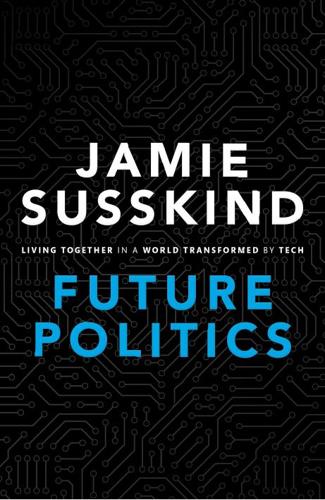
Future Politics: Living Together in a World Transformed by Tech
by
Jamie Susskind
Published 3 Sep 2018
Just thirty years ago, it would have needed 5,000 desktop computers to rival the processing power of today’s iPad Air.43 Sixty years ago, 2010’s iPad2 (now hopelessly out of date) would have cost $100 trillion, roughly twenty-five times the United States federal budget for 2015.44 The average smartphone has more processing power than the Apollo Guidance Computer that sent Neil Armstrong to the moon.45 Our brains are not wired to think exponentially. We tend to think of change as happening in a straight upward line, not noticing when the underlying rate of change is itself accelerating. To put it in perspective, try (in Pedro Domingos’ example) to imagine a single E.Coli bacterium of miniscule proportions.
…
OUP CORRECTED PROOF – FINAL, 28/05/18, SPi РЕЛИЗ ПОДГОТОВИЛА ГРУППА "What's News" VK.COM/WSNWS OUP CORRECTED PROOF – FINAL, 28/05/18, SPi РЕЛИЗ ПОДГОТОВИЛА ГРУППА "What's News" VK.COM/WSNWS IN DE X 3D printing 56–7, 178, 329 4D printing 57 Ackerman, Spencer 396 acquisitions by tech firms 318–19 action, freedom of 164–5, 166–7, 184 digital liberation 169 predictive systems 176 adaptive law 107–10 additive manufacturing (3D printing) 56–7, 178, 329 Affectiva.com 382 affective computing 52–3, 229 affirmative action 261, 268, 292 affordances 169–71 Afghanistan 50 Agoravoting.com 415 Agüera y Arcas, Blaise 172, 403 AI see Artificial Intelligence Airbnb Decentralised Autonomous Organisations 47 guest acceptance/rejection 290 individual responsibility 346 reputation system 289–90 sharing economy 335, 336 Taiwan 234 airport security systems 120–1, 186 Ajunwa, Ifeoma 418 Aletras, Nicolaos 372, 393 algorithmic audit 355–6 algorithmic injustice 279–94 data-based 282 discrimination 281–2 neutrality fallacy 288–92 rough and ready test 280–1 rule-based 283–8 well-coded society 292–4 algorithms 266 and code 94–5 and distribution 266–70, 278 and information 268–9 and participation 268 and price 269–70 of recognition 260, 275–8 scrutiny 132–3 Al-Khwār izmī, Abd’Abdallah Muhammad ibn Mūsā 94 Allen, Colin 393, 394 Allen, Jonathan P. 336, 417, 419, 429, 430, 431 Alphabet 318, 319, 320 altruism, limited 365 Amazon acquisitions 318, 319 Alexa 293 book recommendations 66, 147 commons 332 concentration of tech industry 318, 320 ‘cyber’ and ‘real’ distinction, disappearance of 97 Echo 134, 135 Kindle 151 machine learning 35 order refusal 106 robots 54 rules 116 working conditions 310 ambient intelligence see smart devices OUP CORRECTED PROOF – FINAL, 28/05/18, SPi РЕЛИЗ ПОДГОТОВИЛА ГРУППА "What's News" VK.COM/WSNWS 492 Index American Legal Realism 109 Amnesty International 148 amyotrophic lateral sclerosis (ALS) 32 Anderson, Berit 410 Anderson, Elizabeth 118, 394, 401, 418, 420, 426, 429 Amazon’s working conditions 310 justice in recognition 273 Android 64, 359 Angelidou, Margarita 381 Anglican Church 159 anonymity 231–2 Anonymous ‘hacktivists’ 221 antitrust law 357, 358 Anwin, Julia 403, 422 apathy 349 Apollo Guidance Computer 38 Apple acquisitions 318 concentration of tech industry 320 founders 314 Guidelines for app developers 189 gun emoji 148 homosexuality ‘cure’ apps 235–6 inflexibility of operating system 359 iPad 38 manufacturers’ working conditions 151 refusal to unlock iPhone of San Bernadino terrorist 155 Siri 37, 47, 293 taxation 328 ‘Think Different’ advertisement 6 watches 44 Aquinas, Thomas 215, 409 AR see augmented reality Arab Spring 150, 221 Arbesman, Samuel 193, 406 arbitrariness, rule-based injustice 284 Arendt, Hannah 9, 72, 163, 237, 415 Aristotle 368, 403, 411, 418 democracy 215, 222, 224, 234, 249 justice and equality 259 man as a political animal 222 morality 176 objective failures of recognition 272 political theory 9 work paradigm 300–1 Armstrong, Neil 38 Arneson, Richard 308, 425, 426 Aron, Jacob 376 artificial emotional intelligence 53 artificial general intelligence 33 Artificial Intelligence (AI) 30–7 affective computing 53 AI Democracy 212, 213, 250–4, 348 algorithmic injustice 293 automation of force 119, 120 blockchain 47 bots see bots commons 332 Data Deal 337 data’s economic importance 317 degradation argument 361 Deliberative Democracy 232 digital law 108–9, 110, 113 Direct Democracy 240 facial recognition 66 future of code 98 increasingly quantified society 61 machine vision 51 perception-control 149 political campaigning 220 political speeches 31, 360–1 post-politics 362, 365–6 predictions 173 privatization of force 116 smart devices 48 software engineers 194 staff scrutiny 267 superintelligence 365–6 totalitarianism 177 usufructuary rights 330 Wealth Cyclone 322 Wiki Democracy 245 Asimov, Isaac 198 Assael,Yannis M. 371 Asscher, Lodewijk F. 400, 408 Associated Press 30 AT&T 20 OUP CORRECTED PROOF – FINAL, 28/05/18, SPi РЕЛИЗ ПОДГОТОВИЛА ГРУППА "What's News" VK.COM/WSNWS Index Athens, classical 212, 214–15, 217, 222–3, 224, 228, 232 audit, algorithmic 355–6 augmented reality (AR) 58–9 mixed reality 60 perception-control 146, 149, 151–2, 229, 278 scrutiny 135 augmented things see smart devices Austria 235 authoritarianism 177–9 cryptography 183 state ownership of capital 329 authority 93 automated number plate recognition technology 49–50 automation of force 100, 119–21 autonomy 165, 167 Autor, David 428 Avent, Ryan 424, 425, 427 Azuma, Hiroki 247, 416 Babylon 77, 324 Bachrach, Peter 389, 391, 398 backgammon 31 Bailenson, Jeremy 407 Baker, Paul 422 Ball, James 428 Ball, Terence 368, 389 Baraniuk, Chris 432 Baratz, Morton S. 389, 391, 398 Barr, Alistair 421 Bartky, Sandra 126, 395 Bartlett, Jamie 388, 413, 417 Bates, James 134, 135 Baughman, Shawnee 407 BBC 373, 379, 381, 385, 405 Belamaire, Jordan 386 Belgium 129 Beniger, Andrew J. 369, 389 Benkler,Yochai 368, 370, 378, 398, 399, 400, 412, 416, 431 cooperative behaviour 45 networked information environment 145 smartphones 146 493 Bentham, Jeremy 126, 195 Berkman Center for Internet and Society 184, 405 Berlin, Isaiah 9, 166, 195, 368, 401, 403, 407 Berman, Robby 382, 384 Bernays, Edward L. 410 Berners-Lee, Tim 7, 48, 294, 367, 380 Bess, Michael 402, 434 Bhavani, R. 382 Bible 100, 124, 142, 257, 300, 317 BI Intelligence 428 Bimber, Bruce 369, 412 biometric analysis 52–3, 131, 186 Bitcoin 8, 46 Black Mirror 140 Blake, William 390 blockchain 45–7 automation of force 120 justice 264 smart contracts 106, 119 usufructuary rights 330 voting 240 Blue Brain project 33, 373 Bluetooth 48, 136 Bobbit, Philip 279 Boden, Margaret A. 373–4, 381, 382, 383 Bogle, Ariel 385 Boixo, Sergio 375–6 Bollen, Johan 416 Bolukbasi, Tolga 423 bomb-detecting spinach 51 Bonchi, Francesco 422 Booth, Robert 399 Borges, Jorge Luis 53 Bostrom, Nick 365–6, 372, 373, 379, 381, 382, 435 bots Deliberative Democracy 232–4, 235 network effect 321 Bourzac, Katherine 377 Boyle, James 331, 333, 430–1 Brabham, Daren C. 416 OUP CORRECTED PROOF – FINAL, 28/05/18, SPi РЕЛИЗ ПОДГОТОВИЛА ГРУППА "What's News" VK.COM/WSNWS 494 Index Bradbury, Danny 415 brain–computer interfaces 48, 169 Braithwaite, John 431 Braman, Sandra 389 Brazil 244 Brexit 4, 233, 239 Bridge, Mark 393 Bridgewater Associates 267 British Empire 18 British Library 66 Brown, Gordon 95, 96, 391 Brownsword, Roger 176, 403 Brynjolfsson, Erik 374, 382, 390, 393, 427, 431 capital 315, 316, 334 Burgess, Matt 379 Burke, Edmund 263 Byford, Sam 32 Byrnes, Nanette 392 Cadwalladr, Carole 410, 413 Calabresi, Guido 279 Cambridge Analytica 220 campaigning, political 219–20 Campbell, Peter 371 Canetti, Elias 29 capital 314–17 commons 331–4 sharing economy 335–6 state ownership 329–30 taxation 327–9 usufructuary rights 330–1 carbon nanotubes 40 Casanova, Giacomo 216, 409 Casey, Anthony J. 109, 112, 393, 394 Castells, Manuel 144, 394, 398 Castillo, Carlos 422 CBC 383 Cellan-Jones, Rory 371 censorship by Anglican Church 159 perception-control 143, 146, 148, 151, 156 private power 190 cerebral hygiene 170 CERN 65 Chan, Connie 428 charisma 349 Charles I, King 167–8 chatbots 30 checkers 31 Cheney-Lippold, John 132, 395 chess 31, 36 Chesterton, G.
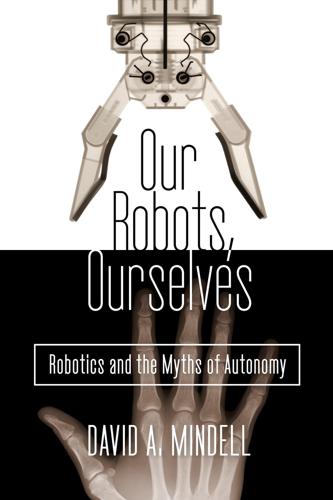
Our Robots, Ourselves: Robotics and the Myths of Autonomy
by
David A. Mindell
Published 12 Oct 2015
Directly behind the indicated number, then, he saw the actual spot on the moon that the computer was flying him toward. Computer graphic depiction of Neil Armstrong’s view out the window from a few hundred feet above the moon during the Apollo 11 landing. Armstrong’s right hand is reaching up to turn off the automatic targeting and autoland features to land in a semimanual mode. Note the Apollo Guidance Computer on the lower right, which could indicate an angle for Armstrong to look through the passive HUD inscribed as a reticle on the window. (IMAGE BY JOHN KNOLL ACCORDING TO THE AUTHOR’S CONCEPTION, WITH RESEARCH HELP FROM PAUL FJELD) If he didn’t like the designated area because of rocks or craters, he could give a momentary jog to the joystick in his hand and “redesignate” the landing area fore, aft, or right or left, almost like moving a cursor with a mouse to tell the computer where to land.
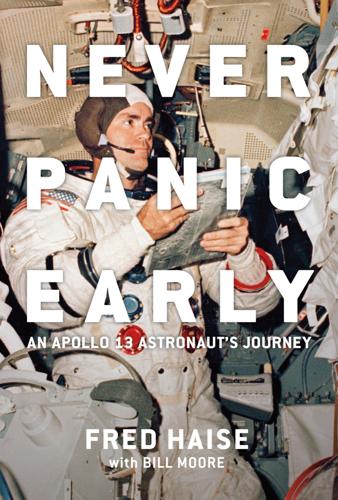
Never Panic Early: An Apollo 13 Astronaut's Journey
by
Fred Haise
and
Bill Moore
Published 4 Apr 2022
I could tell that Buzz was sometimes bored when we were in test mode in the spacecraft. This activity was like the OCP testing at Grumman: It was conducted through a formal procedure with rigid command and response. The action was slow-moving, and Buzz would pass the time working on the DSKY, or the Apollo Guidance computer’s display keyboard. On one occasion, Buzz succeeded in freezing up the DSKY—something that was never supposed to happen. Draper Lab came up with a solution called Go Jam. This required two crewmen, with one depressing the PRO key on the DSKY while another one simultaneously depressed the Mark push button in the lower equipment bay.
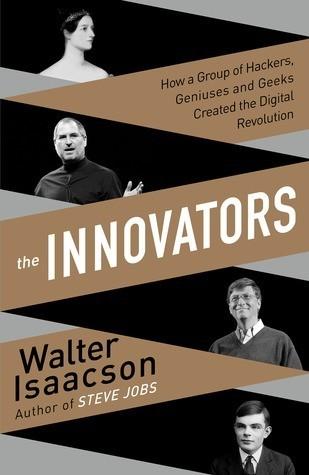
The Innovators: How a Group of Inventors, Hackers, Geniuses and Geeks Created the Digital Revolution
by
Walter Isaacson
Published 6 Oct 2014
So it was designed from scratch to use the most powerful microchips that could be made. The seventy-five Apollo Guidance Computers that were built ended up containing five thousand microchips apiece, all identical, and Fairchild landed the contract to supply them. The program beat Kennedy’s deadline by just a few months; in July 1969 Neil Armstrong set foot on the moon. By that time the Apollo program had bought more than a million microchips. These massive and predictable sources of demand from the government caused the price of each microchip to fall rapidly. The first prototype chip for the Apollo Guidance Computer cost $1,000. By the time they were being put into regular production, each cost $20.

Made to Break: Technology and Obsolescence in America
by
Giles Slade
Published 14 Apr 2006
By that time, Autonetics was producing six new Minuteman II missiles weekly and calling for over 4,000 circuits a week from Texas Instruments, Westinghouse,and RCA.The Minuteman II program had become America’s top consumer of integrated circuits.12 NASA was now paying attention, too. It had purchased integrated circuits since 1959 when Texas Instruments firs made them available. In 1961 NASA charged its internal instrumentation lab with responsibility for the Apollo guidance system. Their administrator recognized that integrated circuitry was ideal for the Apollo guidance computer, of which seventy-fi e were built, each requiring about 4,000 ICs. These integrated circuits now came from several companies, including Texas Instruments, Philco-Ford, and Fairchild Semiconductor. Before Apollo, Robert Noyce at Fairchild had eschewed any involvement in military contracts like the Minuteman.

Augmented: Life in the Smart Lane
by
Brett King
Published 5 May 2016
The tablet computer that you use today would have cost US$30 to 40 million in equivalent computing power to build just two or three decades ago, and would have been known as a supercomputer at the time. The smartphone that you probably have in your pocket is more powerful than all of the computers that NASA had in the 1970s during the Apollo project, and almost 3 million times more powerful than the Apollo guidance computer that Neil Armstrong, Buzz Aldrin and Michael Collins used to navigate their way to the lunar surface. The most powerful supercomputer in 1993, built by Fujitsu for Japan’s space agency at an approximate cost of US$34 million (1993 prices), could easily be outstripped performance-wise by a smartphone like the Samsung Galaxy S6.

Making the Modern World: Materials and Dematerialization
by
Vaclav Smil
Published 16 Dec 2013
Journal of Industrial Ecology, 10: 151–171. Habu, J. (2004) Ancient Jomon of Japan, Cambridge University Press, Cambridge. Hahn, P.O. (2001) The 300 mm silicon wafer — a cost an technology challenge. Microelectronic Engineering, 56: 3–13. Hall, E.C. (1996) Journey to the Moon: The History of the Apollo Guidance Computer, American Institute of Aeronautics and Astronautics, Washington, DC. Hansell, M.H. (2007) Built by Animals: The Natural History of Animal Architecture, Oxford University Press, Oxford. Harpending, H.C., Batzer, M.A., Gurven, M. et al. (1998) Genetic traces of ancient demography. Proceedings of the National Academy of Sciences of the United States of America, 95: 1961–1967.

Chasing the Moon: The People, the Politics, and the Promise That Launched America Into the Space Age
by
Robert Stone
and
Alan Andres
Published 3 Jun 2019
Soon telephones, radios, newspapers, and televisions would be combined into a single portable device with a high-definition screen and a keyboard, allowing for two-way communication with anyone on the planet. Such a device, which could be as small as a wristwatch, would allow anyone anywhere to access the world’s great libraries. The integrated circuit that was used on the Apollo guidance computer a decade earlier had since been superseded by faster and vastly more sophisticated chips. In the United States the first personal computers were being sold to hobbyists, and Clarke was hoping to get one soon. Though ever the optimist, Clarke was bothered by the recent resurgence of interest in paranormal phenomena and pseudoscientific fads in the United States and elsewhere.

The Everything Blueprint: The Microchip Design That Changed the World
by
James Ashton
Published 11 May 2023
Having watched Sputnik 1 launch in October 1957, the National Aeronautics and Space Administration (NASA) and the US Department of Defense became big IC customers. They were unfazed by pricing, and 2 per cent of the country’s gross domestic product (GDP) was ploughed into research and development. Offering vastly improved processing power, these relatively small and lightweight devices found a home in the Apollo Guidance Computer (AGC) installed on board each of the command modules in the space programme that led up to the 1969 moon landing. State support didn’t end there. While inclusion in the AGC stimulated interest from other industries, a 1977 study showed that the US government provided just under half of all research and development money spent by the US electronics industry in the first 16 years of the microchip’s life.

Growth: From Microorganisms to Megacities
by
Vaclav Smil
Published 23 Sep 2019
Global Yield Gap Atlas. http://www.yieldgap.org/. Haensch, S., et al. 2010. Distinct clones of Yersinia pestis caused the Black Death. PLoS Pathogens 6(10):e1001134. doi:10.1371/journal.ppat.1001134. Halévy, D. 1948. Essai sur l’accélération de l’histoire. Paris: Self. Hall, E. C. 1996. Journey to the Moon: The History of the Apollo Guidance Computer. Washington, DC: American Institute of Aeronautics and Astronautics. Hall, M., et al. 2004. Cell Growth: Control of Cell Size. Cold Spring Harbor, NY: Cold Spring Laboratory Press. Hameed, Z., and J. Vatn. 2012. Important challenges for 10 MW reference wind turbine from RAMS perspective.